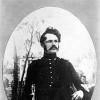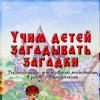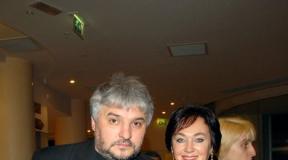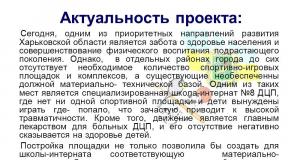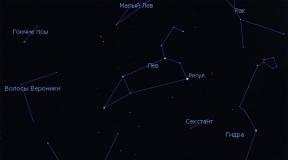Dillman multicomponent system of the involutionary mechanism of aging. Hayflick's experiments, genetic limits of life and theories of aging. Hayflick's telomeric theory of aging
The idea that aging can be established from the moment of birth was expressed by the German Darwinian scientist August Weismann (Friedrich Leopold August Weismann, 1834-1914). In his famous lecture in 1891, Weissmann put forward the hypothesis that death from old age arose in the course of evolution:<Я рассматриваю смерть не как первичную необходимость, а как нечто приобретенное вторично в процессе адаптации:>.
Approaches to the classification of theories of aging
Theories explaining the aging of organisms can be classified in various ways.
For example, there is a division into three groups: genetic theories in which genetically controlled programmed<биологические часы>such as telomeres regulate growth, maturity and old age, neuroendocrine theories and theories of damage accumulation. Generally speaking, this division is rather arbitrary, because all these mechanisms are important and interrelated.
There are also 2 large groups: stochastic (probabilistic) theories and theories of programmed aging.
Theories can be classified according to the level of organization of living matter.
According to V.N. Anisimov, head of the Russian Gerontological Society, the most striking theories are the free radical theory put forward in 1956 by D. Harman (Harman, 1956, 1998), the theory of cellular (replicative) aging by L. Hayflick (Hayflick, Moorhead, 1961; Hayflick, 1998), the telomeric theory of A.M. Olovnikov (Olovnikov, 1971; Olovnikov, 1996), the elevation theory of aging by V.M. Dilman (Dilman, 1987; Dilman, 1971, 1994) and T. Kirkwood's theory of expendable soma (Kirkwood, 1997, 2002). the free radical theory put forward in 1956 by D. Harman, the theory of cellular (replicative) aging by L. Hayflick and the telomeric theory of A. M. Olovnikov, the elevation theory of aging by V. M. Dilman.
Classification of stochastic aging theories
(Schulz-Aellen, 1997)
- Somatic Mutation Theory - Somatic mutations disrupt genetic information and reduce cell function
- Error Catastrophe - Errors in transcription and / or translation processes reduce cell efficiency
- DNA damage, DNA repair - DNA damage is constantly repaired by various mechanisms. Repair efficiency positively correlates with life expectancy and decreases with age.
- Protein damage - Conformational abnormalities of proteins and enzymes (cross-linking) impair cell function
- Cross-linking - Chemical cross-linking of important macromolecules (such as collagen) leads to dysfunction of cells and tissues
- Wear - Accumulation of damage in Everyday life reduces the efficiency of the body
Classification of theories of programmed aging
(Schulz-Aellen, 1997)
- Genetic theories - Aging is caused by programmed changes in gene expression, or the expression of specific proteins
- Death Genes - There are genes for cell death
- Selective death - Cell death is due to the presence of specific membrane receptors
- Telomere shortening - Telomere shortening with age in vitro and in vivo leads to chromosome instability and cell death
- Differentiation disorders - Errors in the mechanisms of gene activation-repression, leading to the synthesis of excess, nonessential or unnecessary proteins
- Accumulation<загрязнений>- The accumulation of metabolic waste reduces cell viability
- Neuroendocrine theories - Insufficiency of the nervous and endocrine systems in maintaining homeostasis. Loss of homeostasis leads to aging and death
- Immunological theory - Certain alleles can lengthen or shorten lifespan.
- Metabolic theories - Longevity is inversely proportional to metabolic rate
- Free radical theory - Longevity is inversely proportional to the degree of free radical damage and directly proportional to the effectiveness of antioxidant systems
- Aging Hours - Aging and death are the result of a predetermined biological plan
- Evolutionary theories - Natural selection eliminates individuals after they produce offspring
Classification of the most important theories of aging according to the level of integration
(Yin, Chen, 2005)
Organizational level of integration
Wear Theory - Sacher, 1966
The Catastrophe Theory of Errors - Orgel, 1963
Stress Injury Theory - Stlye, 1970
Theory of autointoxication - Metchnikoff, 1904
Evolutionary Theory (Programmed Aging Theory) - Williams, 1957
Information retention theory (programmed aging theory)
Organ level
Endocrine Theory - Korenchevsky, 1961
Immunological Theory - Walford, 1969
Brain inhibition
Cell level
Cell Membrane Theory - Zg-Nagy, 1978
Somatic Mutation Theory - Szillard, 1959
Mitochondrial Theory - Miquel et al., 1980
Mitochondrial Lysosomal Theory - Brunk, Terman, 2002
Cell Proliferative Limit Theory (Programmed Aging Theory) - Hayflick, Moorhead, 1961
Molecular level
DNA Damage Accumulation Theory - Vilenchik, 1970
Trace Element Theory - Eichhorn, 1979
Free radical theory - Harman, 1956
Crosslink Theory - Bjorksten, 1968
Oxidative Stress Theory - Sohal, Allen, 1990; Yu, Yang, 1996
Non-enzymatic glycosylation theory - Cerami, 1985
Carbonyl Toxicity Theory - Yin, Brunk, 1995
Pollution Catastrophe Theory - Terman, 2001
Gene mutation theory
Telomere shortening theory (programmed aging theory) - Olovnikov, 1971
Other approaches
Aging as entropy - Sacher, 1967; Bortz, 1986
Mathematical theories and various unified theories - Sohal, Alle, 1990;
Zg-Nagy, 1991; Kowald, Kirkwood, 1994
Danham Harman's free radical theory of aging

Cell aging theory by Leonard Hayflick
Elevational theory of aging

It was put forward and substantiated in the early 50s of the last century by the Leningrad scientist Vladimir Dilman. According to this theory, the aging mechanism begins its work with a constant increase in the threshold of sensitivity of the hypothalamus to the level of hormones in the blood. As a result, the concentration of circulating hormones increases. As a result, there are various forms pathological conditions, including those characteristic of old age: obesity, diabetes, atherosclerosis, cancryophilia, depression, metabolic immunodepression, hypertension, hyperadaptosis, autoimmune diseases and menopause. These diseases lead to aging and ultimately death.
In other words, in the body, there is a large biological clock that will count down the life span from birth to death. At a certain moment, this clock starts destructive processes in the body, which are usually called aging.
According to Dilman, aging and related diseases are a by-product of the implementation of the genetic program of ontogenesis - the development of an organism.
It follows from the ontogenetic model that if the state of homeostasis is stabilized at the level reached by the end of the development of the organism, then it is possible to slow down the development of diseases and natural senile changes and increase the species limits of human life.
Download V. Dilman's book "Large biological clock"
Consumable (disposable) soma theory
Cross-link theory

This aging mechanism is a bit like the effects of free radicals. Only the role of aggressive substances is played here by sugars, first of all - glucose, which is always present in the body. Sugars can react chemically with various proteins. In this case, naturally, the functions of these proteins may be impaired. But what is much worse, sugar molecules, when combined with proteins, have the ability<сшивать>protein molecules among themselves. Because of this, the cells begin to work worse. They accumulate cellular debris.
One of the manifestations of such cross-linking of proteins is the loss of elasticity by tissues. Outwardly, the most noticeable is the appearance of wrinkles on the skin. But the loss of elasticity is much more harmful. blood vessels and lungs. In principle, cells have mechanisms to break down these crosslinks. But this process requires very large energy consumption from the body.
Already exist today medications that break down internal crosslinks and turn them into nutrients for the cell.
Error theory

Hypothesis<старения по ошибке>was put forward in 1954 by the American physicist M. Szilard. Studying the effects of radiation on living organisms, he showed that the effect of ionizing radiation significantly reduces the life span of people and animals. Radiation causes numerous mutations in the DNA molecule and initiates some of the symptoms of aging, such as gray hair or cancers. From his observations, Szilard concluded that mutations are the direct cause of aging in living organisms. However, he did not explain the fact of aging of people and animals that were not exposed to radiation.
His follower L. Orgel believed that mutations in the genetic apparatus of a cell can either be spontaneous or arise in response to aggressive factors - ionizing radiation, ultraviolet radiation, exposure to viruses and toxic (mutagenic) substances, etc. Over time, the DNA repair system wears out, resulting in aging of the body.
Apoptosis (cell suicide) theory

Academician V.P. Skulachev calls his theory the theory of cellular apoptosis. Apoptosis (Greek.<листопад>) - the process of programmed cell death. As trees get rid of parts in order to preserve the whole, so each individual cell, passing its life cycle, should die out and a new one should take its place. If a cell becomes infected with a virus, or a mutation occurs in it, leading to malignancy, or simply expires, then, in order not to endanger the entire organism, it must die. Unlike necrosis - the violent death of cells due to trauma, burns, poisoning, lack of oxygen as a result of clogging of blood vessels, etc., with apoptosis, the cell neatly disassembles itself, and neighboring cells use its fragments as a building material.
Mitochondria also undergo self-liquidation - having studied this process, Skulachev called it mitoptosis. Mitoptosis occurs when too many free radicals are produced in the mitochondria. When the number of dead mitochondria is too large, their decay products poison the cell and lead to its apoptosis. Aging, from the point of view of Skulachev, is the result of the fact that more cells die in the body than are born, and the dying functional cells are replaced connective tissue... The essence of his work is the search for methods to counteract the destruction of cellular structures by free radicals. According to the scientist, old age is a disease that can and should be treated, the aging program of the body can be disabled and thereby turn off the mechanism that shortens our life.
According to Skulachev, the main reactive oxygen species leading to the death of mitochondria and cells is hydrogen peroxide. He is currently testing SKQ, a drug designed to prevent signs of aging.
Interview to "Novaya Gazeta"
Adaptive regulatory theory

The aging model developed by the outstanding Ukrainian physiologist and gerontologist V.V. Frolkis in the 1960s and 1970s, is based on the widespread belief that old age and death are genetically programmed.<Изюминка>Frolkis's theory is that age-related development and life expectancy are determined by the balance of two processes: along with the destructive aging process, the process unfolds<антистарения>, for which Frolkis proposed the term<витаукт>(Latin vita - life, auctum - to increase). This process is aimed at maintaining the vitality of the organism, its adaptation, and increasing life expectancy. The concept of anti-aging (vytaukte) has become widespread. So, in 1995 the first international congress on this problem was held in the USA.
An essential component of Frolkis's theory is the gene-regulatory hypothesis developed by him, according to which the primary mechanisms of aging are disturbances in the functioning of regulatory genes that control the activity of structural genes and, as a result, the intensity of synthesis of proteins encoded in them. Age-related disorders of gene regulation can lead not only to a change in the ratio of synthesized proteins, but also to the expression of previously inoperative genes, the appearance of previously not synthesized proteins and, as a result, to aging and cell death.
V.V. Frolkis believed that the gene-regulatory mechanisms of aging are the basis for the development of common types of age-related pathology - atherosclerosis, cancer, diabetes, Parkinson's and Alzheimer's diseases. Depending on the activation or suppression of the functions of certain genes, this or that aging syndrome, this or that pathology will develop. On the basis of these ideas, the idea of gene-regulatory therapy was put forward, designed to prevent the shifts underlying the development of age-related pathology.
Olovnikov's Redusomal Theory

The protein-coated linear redusome DNA molecule is a copy of a segment of chromosomal DNA. nest. Like telomeric DNA, linear redusoma DNA shortens over time. Therefore, tiny redusomas progressively decrease in size; hence their name. Along with the decrease in DNA in the redusome, the number of different genes contained in it also decreases. The shortening of redusomal DNA molecules (and the resulting change in the set of genes in redusomes, changes the level of expression of various chromosomal genes with age and thus serves as a key means of measuring biological time in individual development.
Free radical theory -Harman, 1956.
Crosslinking theory -Bjorksten, 1968
This aging mechanism is a bit like the effects of free radicals. Only the role of aggressive substances is played here by sugars, first of all - glucose, which is always present in the body. Sugars can react chemically with various proteins. In this case, naturally, the functions of these proteins may be impaired. But what is much worse, sugar molecules, when combined with proteins, have the ability to "stitch" protein molecules together. Because of this, the cells begin to work worse. They accumulate cellular debris. One of the manifestations of such cross-linking of proteins is the loss of elasticity by tissues. Outwardly, the most noticeable is the appearance of wrinkles on the skin. But much more damage is caused by the loss of elasticity of blood vessels and lungs. In principle, cells have mechanisms to break down these crosslinks. But this process requires very large energy consumption from the body.
Today, there are already drugs that break down internal crosslinks and convert them into nutrients for the cell.
Cell Proliferative Limit Theory (Programmed Aging Theory) - Hayflick, Moorhead, 1961
In 1961, Leonard Hayflick presented data that even under ideal culture conditions, human embryonic fibroblasts are able to divide only a limited number of times (50 + 10). The last phase of cell life in culture was likened to cellular senescence, and the phenomenon itself was called the Hayflick limit after the author's name. Hayflick himself did not offer an explanation for this phenomenon.
Telomeric theory of aging - A.M. Olovnikov, 1971
In 1971, a researcher at the Institute of Biochemical Physics of the Russian Academy of Sciences A.M. Olovnikov, using data on the principles of DNA synthesis in cells, proposed a hypothesis according to which the "Hayflick limit" is explained by the fact that with each cell division the chromosomes are slightly shortened. Chromosomes have special end regions, telomeres, which after each chromosome duplication become a little shorter, and at some point are shortened so much that the cell can no longer divide. Then it gradually loses its viability - this is precisely what, according to the telomere theory, is the aging of cells. The discovery in 1985 of the telomerase enzyme, which completes shortened telomeres in germ cells and tumor cells, ensuring their immortality, was a brilliant confirmation of Olovnikov's theory.
Redusome theory - A.M. Olovnikov, 2003
A protein-coated linear DNA molecule (redusome) is a copy of a segment of chromosomal DNA. Like telomeric DNA, linear redusoma DNA shortens over time. Therefore, tiny redusomas progressively decrease in size; hence their name. Along with the decrease in DNA in the redusome, the number of different genes contained in it also decreases. The shortening of redusomal DNA molecules (and the resulting change in the set of genes in redusomes, changes the level of expression of various chromosomal genes with age and thus serves as a key means of measuring biological time in individual development).
MAIN TYPES OF TISSUE AND ORGAN GROWTH IN HUMAN.
General type(in general - body, muscles, skeleton, respiratory organs, liver). They follow the course of the growth curve for body length and have two peaks of growth intensity - in the first year of life and during puberty.
Brain and head type(head and spinal cord, eyes, head sizes). They develop before any other part of the body. Their intensive growth is observed immediately after birth and by the age of 10-12 they reach the size of an adult.
Lymphoid type(thymus, The lymph nodes, lymphoid tissue of the intestine, spleen, tonsils). Lymphoid tissue grows intensively and reaches its maximum development (more than in an adult) until adolescence (11-12 years), and then, probably under the influence of sex hormones, it undergoes a reverse development
to the level of an adult.
4)Reproductive type(testicles, prostate, seminal vesicles, ovaries, fallopian tubes). These organs hardly increase in size until puberty, and then quickly reach the size of the reproductive organs of an adult organism.
From the editor:
Is this theory crazy enough to be true (© Niels Bohr)?
First, read an excerpt from the commentary of one of the Expert's readers, S.V. Dubovsky:
“… The moon is the weakest link in theory. Although the theory itself and all the mechanisms invented are simply brilliant. Probably, for all biological systems it is necessary to proceed from the obligatory end, independent of external circumstances. The clock speed (life span) is set by the properties of the system itself, but we do not know who determines the speed of this counter (alarm clock). Now you can take A. Olovnikov's model and throw the moon out of it, or rather, replace the moon with some kind of internal parameter or human process ... "
––––––––––––––––––––––––––––––––––––––––––––––––––––
Black Sicilian night. New moon. Above the vague outlines of the volcano, from time to time, a thick scarlet cloud flares up, illuminated from the inside by a vent. The sensations are fantastic - delight and horror from the power of the wild. Then he will remember these sensations Alexey Olovnikov when he builds his almost mystical theory of aging, in which apparently unrelated elements are tied - the young moon, tides, sand in the brain (in that part of it called the pineal gland), volcanic releases of hormones acting on unknown science little DNA that acts as a biological clock that counts down how much we have left.
Why is there a certain life span, what is the reason for it? These are the questions that scientists have been asking themselves for hundreds of years. Exists . Among them - theories related to, or programmed changes in gene expression; , or gene disruptions leading to the synthesis of excess proteins. Some authors have suggested that aging is associated with wear and tear as a result of the accumulation of damage.
The most striking and believable, according to the president of the Gerontological Society of the Russian Academy of Sciences, professor Vladimir Anisimov, there remain four theories: put forward in the fifties by D. Harman, elevation by V. Dilman, cell aging by L. Hayflick and the theory of A. Olovnikov.
Our compatriot Vladimir Dilman, last years who lived in the United States, believed that aging and the diseases associated with it were a by-product of the implementation of the genetic program for the development of an organism. He also formulated the idea of a biological clock as a regulatory mechanism that determines the laws of various homeostatic systems.
Harman's free radical theory explains aging by the fact that under external harmful effects on the body, free radicals appear in the cytoplasm, in particular reactive oxygen species, hydrogen peroxide decomposition products that can damage any molecules, including DNA. Over time, the body becomes less and less harmful to free radicals, aging and death sets in. The supporter of this theory academician Vladimir Skulachev However, he believes that free radicals do not appear by chance and suggests that the aging program is inherent in the human body. And if so, then. Hayflick's theory is related to the effect of the limit of cell division. Having exhausted the limit, cells die, the body grows old. However, Hayflick did not explain why this limit exists. Alexey Olovnikov solved the riddle. He suggested that the Hayflick limit is associated with DNA terminal underreplication. Let's remember how a cell divides: a special enzyme runs along DNA - DNA polymerase, forming a copy, or replica, of DNA. But this polymerase does not read the ends of DNA, because it does not capture the most extreme nucleotide sequences. Schematically, linear DNA consists of structural genes encoding proteins, and at the ends of it there are regions that contain regulatory genes and certain sequences that do not seem to carry any useful information... These sequences were discovered back in the thirties by the scientists B. McClintock and G. Möller. They suggested that the ends of the DNA are likely to protect the genome from damage. Scientists have named them telomeres. Alexey Olovnikov predicted that every time a cell divides, these telomeres are shortened, and was of the opinion that this is the reason for aging. However, at the beginning of the new century, he put forward a new original theory, which he called reductive. He suggested that aging is not associated with telomere shortening, but the redumer. Redumers, on the other hand, are a new type of DNA, which, like small loops, are located on chromosomal DNA. In his opinion, they are shortened under the influence of hormone emissions, and the peak of these emissions occurs on the new moon.
Olovnikov's idea of reducer seemed to many to be simply fantastic - after all, such small DNAs were not known to science. More recently, however, scientists have discovered small, single-stranded DNA in mitochondria. It is not yet clear what the purpose of these short DNA strings is, but the very fact of their existence allows us to hope that the two-stranded small DNA - Olovnikov's redumers - are not just a figment of the theoretician's imagination. “Of course, the redusomal theory of Alexei Olovnikov, despite its speculative and sci-fi character, if not even confirmed as a whole, gives an extraordinary charge and prompts us to search for the amazing and beautiful world that the author introduced us to,” comments Vladimir Anisimov on the theory ... Academician Vladimir Skulachev also notes that the theory seems a little crazy, but all geniuses are a little crazy ... Skulachev does not deny that Olovnikov's theory may well turn out to be true. By the way, Skulachev also said that Aleksey Olovnikov had been nominated as a candidate for the Nobel Prize more than once. Let's give the floor to Alexey Olovnikov himself.
- Alexey Matveyevich, at what point did you become interested in the problems of aging?
- Initially, I was engaged in experimental work in the field of immunochemistry. And he became interested in aging in the sixties, when Leonard Hayflick set up his wonderful experiments. He showed that cells have a limited mitotic potential - on average, they divide about 50 times. Prior to that, it was believed that cells double infinitely. Hayflick showed that the cells contain something like a "molecular bookkeeper" who counts the divisions. And he always remembers how many times the cell has shared. In a series of his experiments, there were such experiments: after the twentieth, for example, the cells were frozen in liquid nitrogen, and then they were taken out - after five minutes or a year - and they continued to divide the prescribed number of times, about thirty.
- And Hayflick linked this effect to aging?
- Yes. And all after him too. It was assumed that cells stop dividing, die, the body grows old, age-related diseases begin, and so on. In general, when I first heard about Hayflick's experiments, I naturally became very interested. I heard about them again at Moscow State University. A lecture on Hayflick's work was delivered by the discoverer of mesenchymal stem cells, Alexander Yakovlevich Friedenstein. He gave lectures brilliantly. I listened and was stunned by this Hayflick's riddle: after all, he did not say where the cell has this limit from. I left the university in a semi-trance state. I remember well: autumn, the earth is strewn with golden leaves. I walked and constantly thought, well, what works there? The answer did not come. So I got to the subway. And when I went downstairs, I heard the noise of an approaching train. And then it dawned on me. I understand. The image has taken shape. What is cell doubling? This is essentially a duplication of DNA. DNA is rails. A special enzyme called DNA polymerase moves along DNA during cellular duplication, which makes copies (replicas) of DNA. Polymerase moves like the leading carriage of a train. But DNA, like rails, has an end. Like the lead car, the DNA polymerase enzyme runs into a dead end. Imagine that there is a catalytic center in the middle of the lead car, as in DNA polymerase. It is he who touches the rails and makes a copy. This catalytic center does not reach the end of the rails. This means that the end part of our DNA (if we talk about chromosomes, then a piece of telomere) will not be copied. This is how I found the solution to Hayflick's problem.
- When did you put forward this idea?
- In 1971, I published an article in the reports of the Academy of Sciences and in the American Journal of Theoretical Biology. Back then, I thought that telomeres were simply buffer pieces of DNA that were sacrificed, getting shorter and shorter with each division. I ran to molecular biologists with requests to do experiments and check it out. And they told me so nicely: well, you don't seem to be a fool, why are you talking nonsense - after all, everyone knows that the genome is stable, it cannot be shortened. By the way, Hayflick, because of this dogma, did not associate the division limit with DNA. And I insisted - well, tell me, where are my logical flaws, well, try it, anyway it will be done in the West, let's try ahead.
- In general, did they do it in the West?
- Yes, all my predictions were experimentally confirmed. The first is that the ends of the DNA are a buffer zone, and after each division they are shortened. The second prediction is that nature had to invent a compensatory mechanism in the form of a special DNA polymerase in order to preserve the ends of chromosomes in germ cells, otherwise the end of life. This mechanism should also work in immortal cancer cells. Later it turned out that this compensatory mechanism also exists in stem cells. This compensatory DNA polymerase is called telomerase in the literature. Another prediction is that in bacteria, circular DNA was invented by nature in order to avoid terminal underreplication. Finally, I predicted that there must be a correlation between the size of the chromosomal ends or telomeres and the number of cell divisions. And he believed that this is the reason for aging.
- That is, cells die, body functions weaken, it grows decrepit and dies?
- Yes, but it was the last prediction about the role of telomere shortening in aging that I myself later rejected.
- It was not confirmed in experiments?
- All predictions were confirmed in experiments. Including the correlation between the degree of telomere shortening and the number of cell doublings. But some studies have shown that even an old person's cells retain the ability to duplicate. They took cells from a twenty-year-old and a ninety-year-old, and it turned out that the spread in their ability to divide is not so great. The cells simply do not have time to exhaust their doubling limit before the organism grows old and even leaves for another world. It turned out, in addition, that laboratory mice with rather long telomeres and wild ones with short telomeres live the same period. And I realized that telomere shortening is not the driving force behind aging. When I expressed this thought, my friends waved their hands at me: you yourself came up with the telomere theory, and now you are chopping off a branch!
- Are you disappointed in telomeric theory?
- I began to look in the cell for something that is not a telomere, but just like it, shortening, can count. Then I suggested that another type of DNA molecule could be the "accountant".
- How's that? We only know about one large DNA molecule, which is located in the chromosome?
- Well, yes. And next to it, I assumed, there is such a small DNA.
- Draw ...
- (Draws and comments.) Here is a long, common chromosomal DNA. At the ends it has telomeric DNA, near the so-called subtelomeric regions, and in them there are some regulatory genes. So, over some regulatory genes, I believe, short DNA molecules arise, which contain copies of regulatory genes.
- Is this your "deenkushka" floating somewhere near the big DNA?
- No, it does not swim, but is anchored by its ends on the body of the chromosome. These little DNAs are what I call reducer. Redumeres, like large DNA, have small tips, like telomeres, which I call acromeres. And with these acromeres, it is attached in those places that limit the region of the original chromosomal gene. And this small copy with acromeres looks like a bracket or loop on a large DNA. When dividing, the redumer is also replicated, and the copies are transferred to daughter cells, being retained on the chromosomes. And during replication, its tips are also shortened, like telomeres in chromosomal DNA. The term reducer is from reduce, that is, to reduce. The shortening of the redumer in a dividing cell is precisely what causes cellular senescence. But I hasten to note that the aging of dividing cells is not yet the aging of the organism, which is associated with a special type of redumer - chronomeres.
- Has anyone seen these reducers of yours?
- Not.
- So why are you so sure that they are there, why not say that instead of a redumer there is a plug with an outlet or a parrot with a battery. You came up with everything!
- Of course I did. One of the famous scientists said that science is a cocktail of fantasy and logic. But it seems that all this fantasy fits well into logic. Into the logic of the cell. After all, I also fantasized the mechanism of terminal underreplication of telomeres.
- Can't you see the redoers?
- Do you know what DNA looks like? On the cuts - like a tangled ball with numerous loops. I think these reducers have been seen more than once, but they have not been identified. Someday, I'm sure they will be examined at a student workshop. In principle, they can be identified by aiming a search and then separating them from the large DNA.
- In one of your scientific articles I read that you divide reducers into printomeres and chronomeres
- Yes, redomers are a common, so to speak, generic name. They are subdivided into printomeres, which work in dividing cells, and chronomeres. The participants in the biological clock of the brain, which are especially important for understanding the aging of the body, are precisely the chronomeres, which are located in the hypothalamus.
- Well, we've arrived! You told me that redumers decrease during cell division and this leads to aging, but brain neurons do not divide. How, then, are chronomeres shortened in them?
- And this is the most interesting. The shortening of chronomeres does not follow the mechanism of terminal DNA underreplication, as in telomeres and printomeres. The shortening of chronomeres is associated with the effect of scraping (from the words transcription and rupture - break). The break of a small chronomeric DNA is caused by a special form of transcription (that is, when RNA is built on DNA), carried out by a transcriptional machine - RNA polymerase. It is assumed that with a particularly intense transcription of chronomeres, a rupture of the end of this chronomere fixed on the body of the chromosome occurs. This happens occasionally - against the background of a sharply increasing release of hormones in the central nervous system.
- Under what circumstances?
- With the participation of the moon.
- Y-yes ...
- Do you think it's time to call the psycho wagon? I'll explain now. Here we will leave our torn chronomere a little alone. Famous Soviet scientist Vladimir Mikhailovich Dilman has long assumed that a biological clock is ticking in the human hypothalamus. But he did not explain what the spring of their mechanism is. He was an endocrinologist and linked the ticking of a clock to hormone levels. Hormones have many functions in the body. The main hormonal centers of the brain are the hypothalamus, pituitary and pineal gland. The endocrine system has its own system of checks and balances - hormones, synergists and antagonists are produced, all in order for the system to work reliably. But I believe that nature has used this managerial endocrine system, also to count the time. After all, we know that at about fifteen years of age, puberty occurs, at about thirty - the brain fully intellectually matures, at about fifty - menopause in women, and at some time - andropause in men. Hormones follow different rhythms. Man is generally permeated through and through with rhythms. Nature, from my point of view, had to choose such a relatively rare rhythm that would affect the shortening of chronomeres and at the same time act, using the length of these chronomeres as economically as possible.
- That is, hormonal rhythms control the biological clock?
- Yes. This temporal rhythm I call the T-rhythm. A certain hormone (or hormones) at the peak of the release should act to shorten the chronomeres. As I said, through transcription. The supply of stimulating hormones to the cells of the hypothalamus (this is where the chronomeres lie) makes the RNA polymerase run along the chronomere (and, of course, in general along any transcribed DNA) faster, creating many copies of RNA. But polymerases run so intensively that at the peak of the hormonal T-rhythm, the ends of the acromeres are mechanically cut off at their anchorage points. A short torn off piece of acromere is destroyed by enzymes, and auxiliary proteins permanently sitting on the DNA chronomeres fix the now shortened acromere again in its former place. But now the chronometer has become shorter. And this is tantamount to one "tick" of the chronometric clock of the brain. In the next peak of hormone release, it will become even shorter. But what else is going on? Since the attachment points of its ends on chromosomal DNA are always at the same standard distance from each other, the chronomere, like some kind of loop or spring, is tightened more and more between these points each time. The so-called torsional (torsional) stress builds up in the chronometer. And this stress must inevitably affect the work of RNA polymerase. In experiments with an individual DNA molecule, American scientists deliberately twisted, stretched, or, conversely, dissolved DNA and observed how the rate of movement of polymerases along DNA changed. It turned out that too much torsional stress in DNA can even stop the polymerases from working. Likewise, in an overly stretched chronomere, the productivity of RNA polymerase should decrease.
- And why can this affect the aging of the whole organism?
“The chronomere loop contains genes that regulate the work of structural genes in normal chromosomal DNA through regulatory RNAs. So, RNA polymerase, due to the tension in the stretched chronomeric loop, is forced to move more and more slowly and, therefore, to produce less and less regulatory RNA. And without them, the activity of the structural genes of chromosomes cannot be manifested in full force. Therefore, the synthesis of the products of these genes decreases. These products are becoming less and less (or, on the contrary, more, if the shortening of the chronomere causes a decrease in the synthesis of inhibitor proteins). That is, in an old man, some cell production may decrease, and some may increase, and all this leads to hormonal imbalance, to a change in the activity of a wide variety of cells. And the whole body is aging because of this.
In general, I postulated that the signal of aging is the lack of productivity of chronomeric regulatory genes. And the human hypothalamus remembers the number of years lived by shortened acromeres, and not telomeres of large DNA, as I thought before. Yes, telomeres also shorten, but they are, as it were, innocent bystanders of the aging process. Telomeres cannot tell the cell about their shortening. And chronomers can. Because the activity of structural genes ultimately depends on them.
- Well, how, for example, does this process inform that it's time for puberty?
- If, for example, in the hypothalamus, the chronomere, which regulates the production of large DNA genes responsible for curbing the process of puberty, is shortened, then its shortening will gradually release these reins. You will mature.
- And what is the connection with the Moon?
- I think the T-rhythm is the 28-day lunar rhythm. The Sun is our pacemaker in our circadian rhythms, and the Moon is also our pacemaker, only in rhythms that control lifespan.
- But then we must have some kind of antenna, or what?
- Gravity sensor. Have you heard that there is a sensor in our ear that lets us know where we are tilting our heads? There, like small balls hang on thin hairs. So they, when we bend, touch the cells of the ear, and so we feel in which direction we are leaning.
- Is your gravitational sensor not sitting in your ear?
- No, in the pineal gland. I named it the moon sensor. And the most important component of this moon sensor is sand.
- Sand in the brain? Well, there is something in that.
- Don't be surprised, there is a scientific name - brain sand. These are such calcium stones that are located in the intercellular space in the pineal gland, or otherwise in the pineal gland of our brain. They are denser and larger than cells and under the influence of the Moon, especially strongly during the new moon period, they press on the cells of the pineal gland, and in response they begin to eject neuropeptide hormones from this endocrine gland, which are located in special cellular vesicles-vacuoles. This is how the peak of the release of hormones is formed. Epiphyseal hormones attack the hypothalamus, stimulate it, and through it - the pituitary gland, and in total a hormonal cocktail arises, which makes the cells containing chronomeres work especially hard and shorten them during this work.
- And all this happens at a certain moment?
- Yes, with the participation of the Moon. The moon has a gravitationally weak effect on everything on Earth, since its gravitational force is much less than that of the Earth. But on a new moon, when the Earth, the Moon and the Sun line up in one line, the gravitational force of the Moon is added to that of the Sun. And then, for example, the most powerful ocean tides occur. And there is a displacement of grains of sand in the pineal gland. That is why I called the epiphyseal gravisensor a lunosensor.
- Is it possible to make these T-rhythms of yours, which lead to shortening of chronomeres, ticking less often?
- Indeed, I would like it to be less often. And I think this will become possible in the future. A new branch of pharmacology will arise - the search for drugs that control the new physiological system of the body that I have postulated - the lunosensory system.
- Yes, the Brothers Grimm are just resting. How did you connect the Moon with sand, hormones and chronomers so cleverly?
- At one of the conferences in Stromboli, the Sicilians drove us around the volcano. Night, Moon, sea, volcano ... Something settled in the subconscious. And at the conference there were many materials about the pineal gland. Back in Moscow, I began to read them. And I must, what I see - slices of the pineal gland, similar to a field, strewn with boulders, and between them cells. Boulders are grains of sand. The very sand of the brain. And then there was, as psychologists like to say, insight: Stromboli, the Moon, sand in the pineal gland. Everything lined up and connected. And I frantically began to jot down a new theory. Glad that everything is so logical. But when I wrote it, I read another small note that there is sand, of course, in the pineal gland of an adult, but the embryo does not have it.
“I imagine your structure began to crumble like a sand castle.
“I was terribly upset. For half an hour. My God, but the embryo really needs a clock to build an organism in time. And I began to dig all the information about this sand. And here nature stretches out its hand. Indeed, the human embryo does not have sand in the pineal gland, but it turned out to be full of it in the embryonic pituitary gland. And he mechanically acts on the endocrine cells there. And then, around the time of the birth of a child, this sand is absorbed in the pituitary gland and first appears in the pineal gland. Like this.
- No, I don’t offer a helmet. But as soon as the reducers are found, and I am sure of this, their products can be used. And you can go the other way. A Russian experimenter and I have conceived a project, the meaning of which is in the search for drug interruption of the signals that lead the brain to aging.
According to this theory, human fibroblasts
sharing only a limited number
times (75-80 times), after which their ability to
proliferation is depleted, and in this state
they are able to stay for a long time. This
the property is called "cellular aging"
("Hayflick limit"), genetically inherited and
associated with programmed inhibition
mitotic potential in the process
terminal differentiation of human cells
Hayflick limit or limit -
The limit on the number of divisions of somatic cells is named after its discoverer Leonard Hayflick. In 1961, Hayflick observed how human cells dividing in cell culture die after about 50 divisions and show signs of aging as they approach this boundary.
This border was found in cultures of all fully differentiated cells of both humans and other multicellular organisms. The maximum number of cell divisions differs depending on its type and even more differs depending on the organism to which this cell belongs. For most human cells, the Hayflick limit is 52 divisions.
The Hayflick border is associated with a reduction in the size of telomeres, sections of DNA at the ends of chromosomes. As you know, a DNA molecule is capable of replication before each cell division. At the same time, the telomeres at the ends of it are shortened after each cell division. Telomeres shorten very slowly - by several (3-6) nucleotides per cell cycle, that is, for the number of divisions corresponding to the Hayflick limit, they will be shortened by only 150-300 nucleotides. Thus, the shorter the “telomere tail” of DNA, the more divisions it has passed, and therefore the older the cell.
There is a telomerase enzyme in the cell, the activity of which can ensure the lengthening of telomeres, while the life of the cell is also lengthened. The cells in which telomerase functions (reproductive, cancerous) are immortal. In ordinary (somatic) cells, of which the body basically consists, telomerase "does not work", therefore telomeres shorten with each cell division, which ultimately leads to its death within the Hayflick limit, because another enzyme is DNA polymerase - is unable to replicate the ends of the DNA molecule.
At present, an epigenetic theory of aging has been proposed, which explains the erosion of telomeres, primarily by the activity of cellular recombinases, which are activated in response to DNA damage caused mainly by age-related depression of the mobile elements of the genome. When, after a certain number of divisions, telomeres disappear altogether, the cell freezes at a certain stage of the cell cycle or starts the apoptosis program - the phenomenon of smooth cell destruction discovered in the second half of the 20th century, manifested in a decrease in cell size and minimization of the amount of substance entering the intercellular space after its destruction.
In principle, the experiment conducted by Leonard Hayflick in collaboration with Paul Moorehead was quite simple: equal parts of normal male and female fibroblasts were mixed, differing in the number of cell divisions passed (male - 40 divisions, female - 10 divisions) so that fibroblasts could be distinguished further apart. In parallel, a control was set with male 40-day-old fibroblasts. When the control unmixed population of male cells stopped dividing, the mixed experimental culture contained only female cells, because all male cells had already died. Based on this, Hayflick concluded that normal cells have a limited ability to divide, in contrast to cancer cells, which are immortal. So it was suggested that the so-called "mitotic clock" is located inside each cell, based on the following observations:
Normal human fetal fibroblasts in culture are capable of doubling the population only a limited number of times;
Cryogenically processed cells "remember" how many times they divided before being frozen.
The biological meaning of the phenomenon
Currently, the dominant point of view is that the Hayflick limit is associated with the manifestation of a mechanism for suppressing tumor formation that has arisen in multicellular organisms. In other words, tumor suppressive mechanisms, such as replicative senescence and apoptosis, are indisputably useful in early ontogenesis and maturity, but sideways cause aging - they limit life expectancy as a result of the accumulation of dysfunctional senescent cells or excessive death of functional ones.
Anoptosis is programmed cell death. In the body, apoptosis acts as an integral component of the mechanism for maintaining cellular homeostasis. It is “safer” for the organism as a whole to have a mechanism for the elimination of genetically damaged cells than the risk of the emergence of foci of uncontrolled autonomous growth. Apoptosis acts as one of the mechanisms that protect the body from cells that carry genetic damage that predispose to malignant transformation. The skin of older people contains a large number of aging fibroblasts. The high sensitivity of the skin of the elderly to the carcinogenic effects of ultraviolet rays and the reduced ability to heal wounds are well known. The accumulation of aging cells resistant to apoptosis in tissues with age is possibly one of the causes that ultimately leads to neoplasia, neurodegenerative processes, and death.







